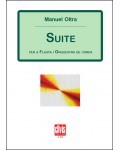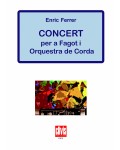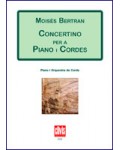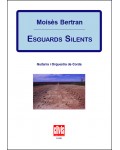
No products
Prices are tax included
Product successfully added to your shopping cart
There are 0 items in your cart. There is 1 item in your cart.
- English
- Castellano
- Català
Suite per a flauta i orquestra de corda
E504
New product
The general inspiration of the piece stems from traditional music, although no traditional theme is referred to at any point during the piece. It could be described as a stroll (a suite) through various environments and atmospheres which abound with good taste that commences with a delicate, albeit rhythmic prelude introducing the two main elements on which the whole Suite is based.
| Period | 20th Century |
| Subheading / Parts | Preludi - Cançó - Interludi - Dansa - Marxa i Fuga |
| Instruments | Flute, string orchestra |
| Pages | 40 |
| Time | 12 min |
| Contents | Score and flute part |
| ISMN | 979-0-3502-0612-2 |
| Remarks | The parts of orchestra are available in rent regime. Contact the publishing company. |
| Edition | Printed |
This is not a piece intended for the soloist to be able to display all his or her virtuoso talents, but rather a piece in which the flute forms part of the ensemble as one more element and without unduly standing out. The composer has always referred to this piece as Suite for strings and flute; thereby highlighting the fact that the wind instrument occupies its natural place, without being forced, intervening only in obedience to strictly musical criteria. This piece is structured in five movements, the fourth of which does not make use of the flute. The general inspiration of the piece stems from traditional music, although no traditional theme is referred to at any point during the piece. It could be described as a stroll (a suite) through various environments and atmospheres which abound with good taste that commences with a delicate, albeit rhythmic prelude introducing the two main elements on which the whole Suite is based. This is followed by a sweet song in which the flute alludes to the theme only once and which the orchestra picks up and links with an interval working as a scherzo: dynamic, playful and with a lively and spirited ending. The fourth movement is a dance that produces a natural combination of binary and tertiary rhythms, and which connects to the final movement with a pianissimo. This last movement is a solemn march with an outstanding staccato theme that acts as prelude to the final fugue, in which the composer shows his mastery of this genre. This piece, which according to the composer “is nothing more than the product of a youthful indulgence which he created with no greater pretence in mind”, was composed in Barcelona in 1953.
David Puertas




















